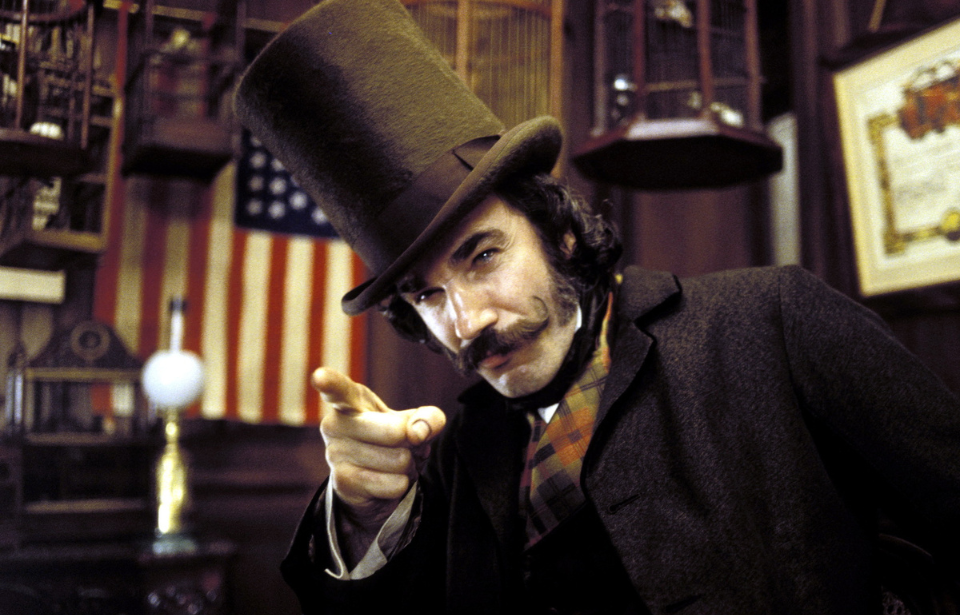Known for his charisma and his excessively large top hat, Bill the Butcher is undoubtedly one of the standout characters from the hit movie Gangs of New York. While he was exaggerated to some degree by Hollywood, the Butcher was actually based on a very real gang leader named William Poole. Read on to discover the man behind the movie, and the short life of the infamous leader of the Bowery Boys.
Early life of Bill the Butcher
Very little is known about William “Bill the Butcher” Poole and his early life. Instead, he is best known as almost a mythical figure. What can be confirmed is that he was born in Sussex County, New Jersey, on July 24, 1821. Roughly 10 years later his family moved to New York City so that they could open a butcher shop in Manhattan. This was, in part, how Poole got his nickname as he took over the business from his family when he was old enough.
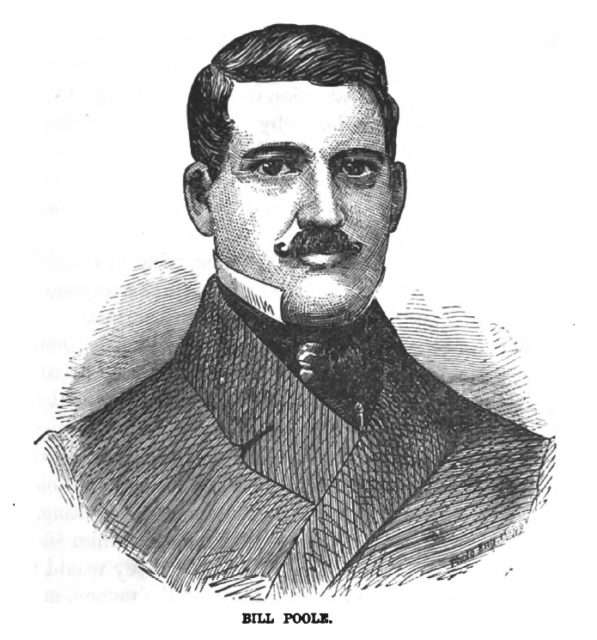
When he was in his 20s he also joined the Howard Volunteer Fire Engine Company #34, and eventually started the notorious street gang the Bowery Boys. Poole was married by the early 1850s, with a son named Charles, although there is little information about his wife. Around the same time he decided to close his family business to focus on his other endeavors. He opened a saloon called the Bank Exchange.
A butcher, a volunteer fireman, and a boxer
You may think that Bill the Butcher got his name from his profession, but that was only a small part of it. The nickname was actually given to him because he was a notorious bare-knuckle boxer who frequently pulverized his opponents until they looked like chunks of meat. Poole almost always had a size advantage against his opponents, as he was six feet tall and 200 pounds, but that didn’t mean he fought fair.
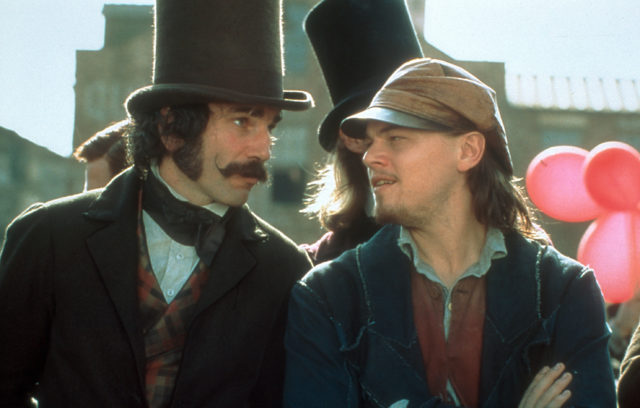
It was reported, “He was well known as being a notoriously dirty fighter, not averse to biting off noses, gouging out eyeballs, or beating a man to jelly.” Although he didn’t use it when he was boxing, we can only hope, Poole was also said to be an exceptional knife fighter – a skill that he picked up through his butcher career. His arch nemesis in boxing, and life, was Irishman John Morrissey, and the pair butted heads many times before Poole’s death.
The Bowery Boys
Although Poole was a businessman, an athlete, and dabbled in politics, his claim to fame was the founding of the Bowery Boys. Unlike many of the other New York City gangs, whose members lived in tenement housing, Poole and his men lived in a more working-class community. It is a common misconception that he lived in Five Points, as his neighborhood was actually on the border. The Bowery Boys mostly held respectable places in society, and generally weren’t involved with the law. They were, however, outspoken against Irish immigration.
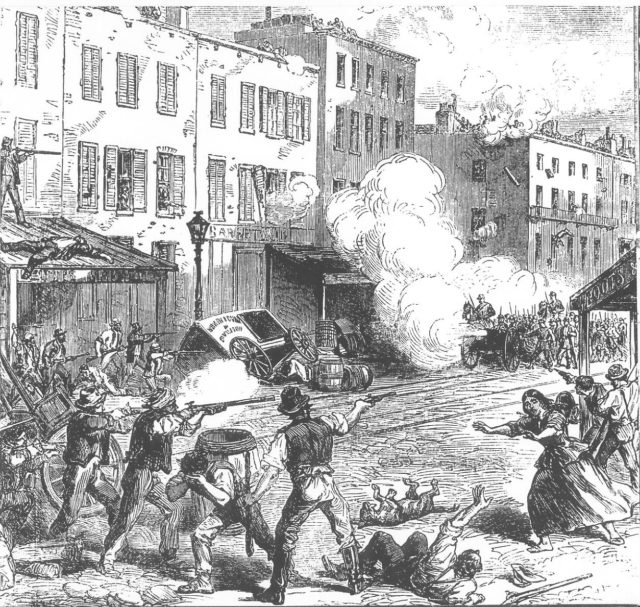
Bill the Butcher put together a gang made up entirely of volunteer firemen. Their gang uniform consisted of a stovepipe hat, just like what is pictured in Gangs of New York, a red shirt, and pants that they tucked into their boots to look like firemen.
The Bowery Boys were described in detail by contemporary writer James Dabney McCabe: “You might see him ‘strutting along like a king’ with his breeches stuck in his boots, his coat on his arm, his flaming red shirt tied at the collar with a cravat such as could be seen nowhere else…None so ready as he for a fight, none so quick to resent the intrusion of a respectable man into his haunts.”
Death of Bill the Butcher
Poole died well before his time, on March 8, 1855, at only 33 years old. Ultimately he was foiled by his rival, the Irish boxer John Morrissey. The two fought each other in 1854, and Poole won. This never sat right with Morrissey, who decided to take revenge against Poole. On February 25, 1855, Morrissey had two men – Lewis Baker and Jim Turner – shoot the notorious Butcher while he was out at a bar in the city.
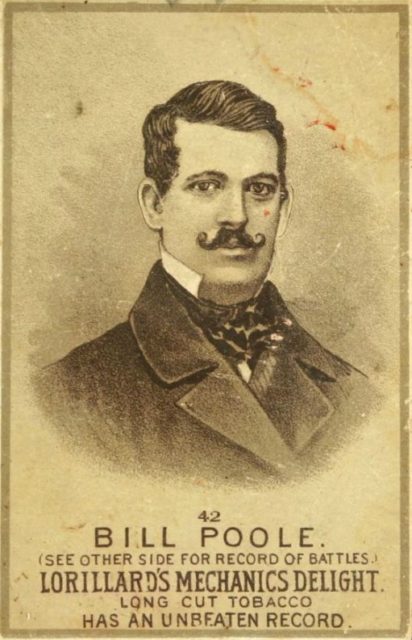
Although he initially survived the shooting, he ended up succumbing to the wound days later in his family home. On his deathbed, he was quoted as saying, “I think I am a goner. If I die, I die a true American; and what grieves me most is, thinking that I’ve been murdered by a set of Irish – by Morrissey in particular.” Poole’s funeral took place in Brooklyn three days later in front of an audience of thousands.
Gangs of New York
The most famous depiction of Bill the Butcher was by Daniel Day-Lewis in the film Gangs of New York, loosely based on the book of the same name. The plot follows Amsterdam Vallon, played by Leonardo DiCaprio, whose father, once leader of the gang the Dead Rabbits, was killed by the Butcher. Vallon returns to the Five Points, an area of heavy gang activity, in 1862 to get revenge against his father’s killer.
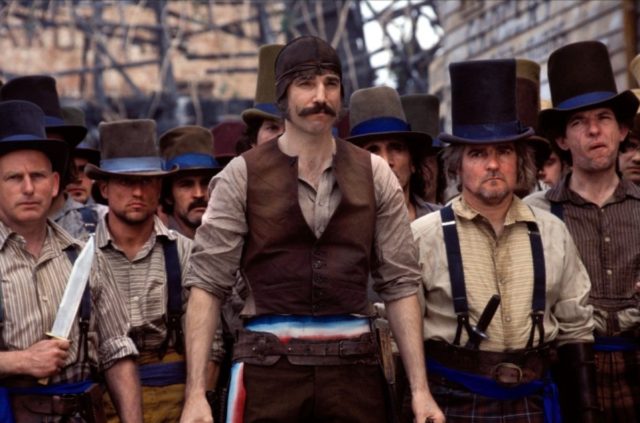
Overall, the depiction of Poole in the film wasn’t completely true to his character. While he was portrayed as a butcher, it was never documented that he killed anyone as he did in the movie. He was also long dead by the time Gangs of New York was set.
There were still lots of accurate bits thrown in. In one instance, a gangster can be seen putting a barrel over a fire hydrant. This was something that the Bowery Boys did do to stop rival firefighters from halting a nearby blaze.
More from us: Who Was Mae Capone, the Wife Of Mobster Al Capone?
The movie also featured many of the real-life gangs that walked the streets of New York: the Plug Uglies, the Shirt Tails, and the True Blue Americans. In reality, these groups had altercations, but they weren’t anywhere near as bloody or brutal as they were depicted in the film.
